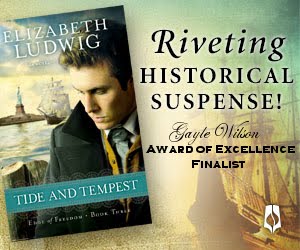Writers are usually readers, and as end consumers may dive into the craft of their favorite authors with a list of their own pet peeves. I know it’s difficult for me to read without wanting to edit. One such peeve of mine is excessive attributions, such little nothing words saying something everyone should know, filling space, but adding no value to the story. You will not find many in VOW UNBROKEN, my new historical Christian romance from Howard Books, a division of Simon and Schuster.
What is an attribution? It ascribes a work to a particular author or artist. From our first grade Dick and Jane readers (I’m dating myself) to the thickest novels, the attribution is mostly used to denote WHO SAID THAT dialogue.
He said. She said. They’re used a lot in a scene with two characters, male and female. But let’s break it down. He and she are gender pronouns interchangeable with the character’s proper name. It always refers back to the last proper name of its gender mentioned and should be used often in preference to ninety-seven proper names per page. (an unrelated tip ☺)
And the second half of our short attribution is a verb telling the reader what the character’s doing. Said - to use your voice to express with words. But wait. Didn’t the reader already know that? Didn’t the double quotation marks at either end of the dialogue indicate the words were indeed voiced aloud? Yes! Double quotation marks are punctuation used to set off speech, a quotation, a phrase or a word.
And it’s the same with asked; the question mark indicates the character asked a question. Said and asked are so useless and unnecessary. Readers know without you telling them. SHOW don’t TELL!
And fancy attributions are no better. He hollered. She insisted. The actual words spoken and the characters’ posture should SHOW readers how the words were spoken. Fancier still, add an ly adverb he hollered emphatically or she insisted arrogantly. For example: “Hey! You! Stop that!” he hollered. Don’t the words indicate hollering? Or “I assure you, sir, I am not the woman you’re looking for,” she insisted arrogantly. Her words transfer the idea of arrogant insistence?
But a novel can’t have a full page of back and forth dialogue between two characters or readers get lost. Everyone has experienced having to go back line by line to figure out who said that. Speakers need to be identified! I propose that action is ten—no a hundred—times stronger than an attribution to handle that task.
Look how using action with the same dialogue strengthens the writing. The man took the stairs two at a time storming toward the intruder teetering on the windowsill. “Hey! You! Stop that!” Can’t you hear him hollering and sense the urgency? And what about mental pictures? The man, the intruder, the torn screen and open window’s edge.
Or for the woman: Charlotte pulled her elbow from the dandy’s grasp in the brothel’s parlor. “I assure you, sir, I am not the woman you’re looking for.” Writers are supposed to paint word pictures. And verbs, not adjectives and adverbs, drive the story. Could anyone prefer the passive he hollered after hearing the active choice?
There doesn’t always have to be long, compound actions. A simple he smiled SHOWS the reader a new mental picture rather than TELLING him something he already knew. Sometimes, in conjunction with action, use introspection—only from your POV character of course. Your action/introspection sentences that identifies speaker need to be as varied as all sentence structure—not always two word attributions or they stick out and interrupt dialogue’s flow. Vary sentence length!
Be aware. Count how many attributions you have on a page, in a chapter. I allow maybe two attributions per book – yes, PER BOOK. It is SO much stronger to use action to identify a speaker. #1 ‘active’ not ‘passive’ #2 ‘shows’ instead of ‘tells’ #3 gives reader new mental picture #4 can enhance characterization – example: She stomped her foot and put both fists on her hips. Isn’t that SO much better than ‘she declared angrily’? And tells you more about the character.
Yes, abundant attributions may be found aplenty in published books, but in these days when editors want to find a reason to reject your work, it must be a step above. Get into the habit of using action instead of attributions, and your manuscript will stand out in a pile.
Please return Friday for a chance to win a copy of Caryl's book!
 Though Caryl McAdoo has 9 titles from 4 publishers, she realized her dream this month when Simon & Schuster’s Howard Books debuted VOW UNBROKEN, her historical Christian romance set in 1832 Texas. The novelist enjoys painting and singing new songs the Lord gives her. She lives in the woods of Clarksville in Red River County with husband Ron and four grandsons.
Though Caryl McAdoo has 9 titles from 4 publishers, she realized her dream this month when Simon & Schuster’s Howard Books debuted VOW UNBROKEN, her historical Christian romance set in 1832 Texas. The novelist enjoys painting and singing new songs the Lord gives her. She lives in the woods of Clarksville in Red River County with husband Ron and four grandsons. Website - http://www.CarylMcAdoo.com
Facebook - http://www.facebook.com/CarylMcAdoo/author
Blog - http://www.CarylMcAdoo.blogspot.com
Goodreads - https://www.goodreads.com/author/show/181587.Caryl_McAdoo
Twitter - http://www.twitter.com/CarylMcAdoo
LinkedIn - http://www.linkedIn.com/CarylMcAdoo
Pinterest - http://www.pinterest.com/gramilady








 Anonymous
Anonymous








0 comments :
Post a Comment